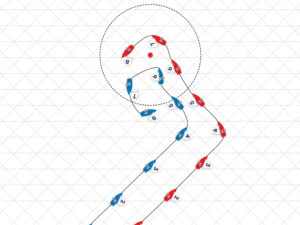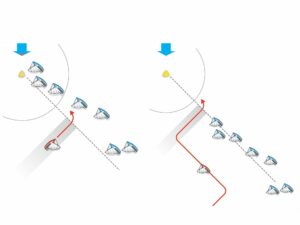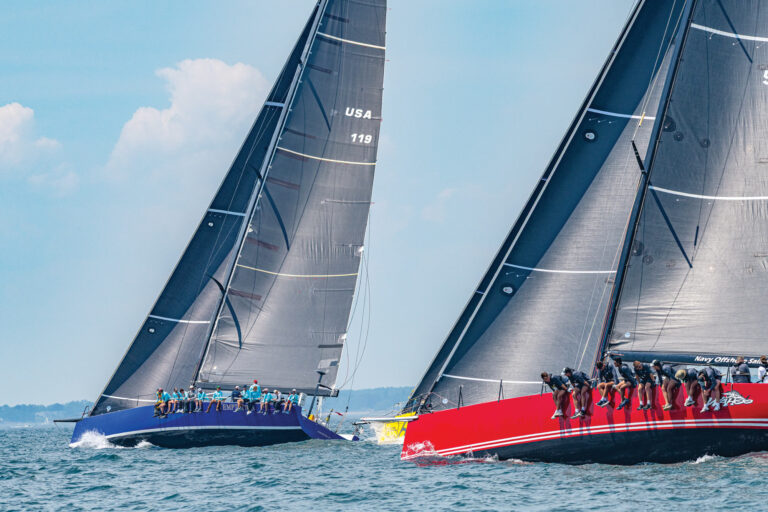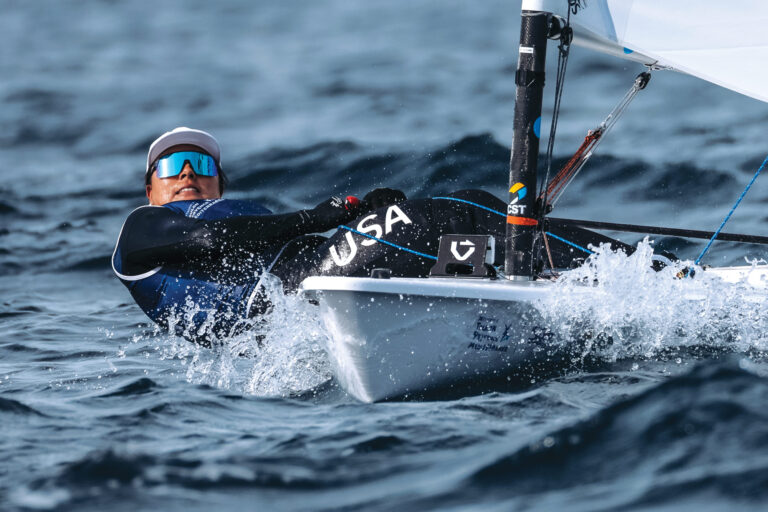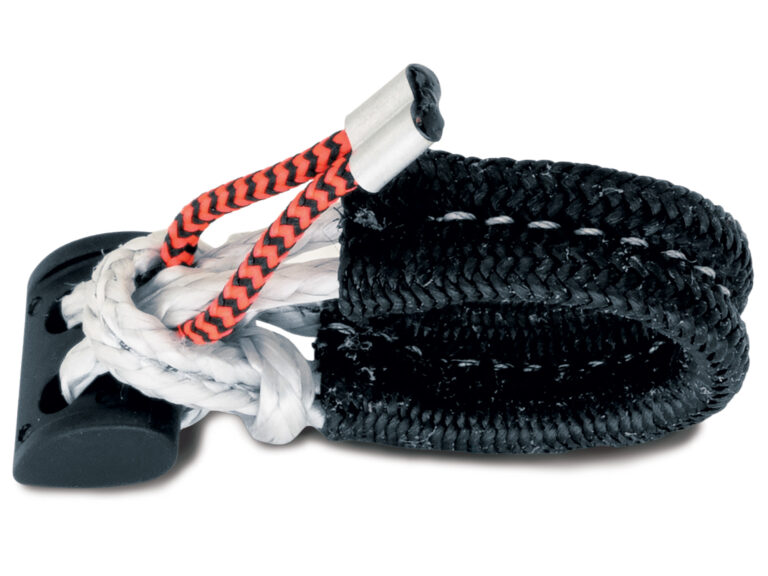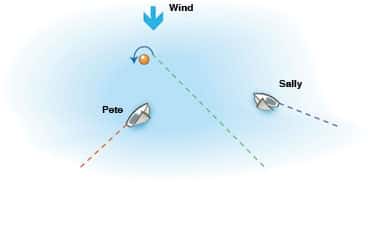
rose rule 18 368
Every four years, starting on January 1 of the year following the Summer Olympics, the sailing world competes under a revised edition of The Racing Rules of Sailing. The changeover to the 2009-2012 edition will occur in seven months. The revised US SAILING rulebook is scheduled to be mailed to all US SAILING members and available in chandleries in December.
Significant changes-ones that will require everyone who races to spend time studying-will be made in Rules 18 and 19, the rules that apply at marks and obstructions. It is obvious, from analyzing protests, appeals, and questions I receive, that these rules cause more problems than any others. Both Goran Petersson, President of the International Sailing Federation (ISAF), and Paul Henderson, his predecessor, urged the ISAF Racing Rules Committee to simplify these rules.
It’s not that the rule writers have been ignoring these rules. Significant changes were made when the entire rulebook was simplified in 1997, and a second effort focusing specifically on Rules 18 and 19 was made in 2001. Nevertheless, those rules continue to be deficient in three important ways: They do not accurately reflect how most sailors sail at marks and obstructions, they contain numerous gray areas where even experts disagree on how the rules cover common situations, and in some mark-rounding situations the ambiguities in the current rules have resulted in costly collisions between boats.
Three years ago the ISAF Racing Rules Committee requested proposals from its member national authorities (of which US SAILING is one) that would remove these three deficiencies and, to the extent possible, simplify the rules at marks and obstructions without changing the “game” we play. The rules committees in the United States and in England responded with draft rules that were tested by a few fleets in the summer of 2006. Then ISAF asked a committee of five from the United States and England to combine the best ideas from those drafts and recommend new rules for 2009. After extensive e-mails and conference calls, this committee, on which I served, produced a proposal that was studied and commented on by members of the ISAF Racing Rules Committee. A revised proposal, based on those comments, has been now been accepted by ISAF.
There will be a few other changes in the Part 2 rules that govern right of way and tactics, but none of them are as important or basic as the changes involving marks and obstructions.
Appendix P, the “Yellow Flag Rule” that allows the protest committee or its designated observers to penalize boats that break Rule 42, the Propulsion Rule, will be changed. The penalty for a boat that breaks Rule 42 more than two times during a regatta will be reduced and, in limited circumstances, a boat penalized under Appendix P will be able to obtain redress if the protest committee makes an error.
In other parts of the rulebook you will see quite a few changes, but virtually none of them will affect local racing. Most of these changes were made to correct minor defects in current rules. Several changes were made that will be of importance at major international events in which an International Jury serves as the protest committee, or in which the racecourse passes through the waters of more than one country.
US SAILING will revise its prescriptions to the rules, and it appears likely that there will be one change of consequence. A new prescription is being drafted that would, in many races, require the helmsperson and the “person in charge” (see Rule 46) of each boat to be a member of US SAILING. The details of that new requirement were still under discussion in April.
|| |—| | Elizabeth Wishe| |Because the current set Paul to leeward of the mark, his proper course at the mark is to tack. Sara, reaching, will fetch the mark without tacking. Rule 18.1(b)’s second part implies that Rule 18 does not apply| For the duration of this year, it’s status quo with the 2005-2008 rules, so let’s take a look at one part of Rule 18 that will not change significantly in 2009. It’s that part of Rule 18.1, which states that Rule 18 “does not apply while . . . boats are on opposite tacks . . . when the proper course for one of them, but not both, to round or pass the mark . . . is to tack.” The five-person team that drafted the new rules for marks and obstructions were hoping to simplify or eliminate it because it is quite a mystery to most competitors. We tried various approaches, but all of them failed-either because they did not cover the appropriate circumstances or because the proposed wording was no less mysterious than the current wording. In the end, we chose wording for 2009 that is very similar to the wording quoted above.
There are good reasons for including the second part of Rule 18.1(b). It is intended to cover two situations. They are shown in the first two diagrams. Suppose Pete, on port tack, and Sally, on starboard, are on converging courses approaching a windward mark to be left to port. Sally is clearly fetching the mark and, in fact, is close-reaching to it because she has overstood. The first part of Rule 18.1(b) states that Rule 18 “does not apply while . . . boats are on opposite tacks. . . on a beat to windward.” The term “beat to windward” is not defined in the rules, but in nautical dictionaries, it is defined as “to sail closehauled or above.” Sally is sailing below a closehauled course, and therefore, if we did not include Rule 18.1’s second part, Pete would be able to ask for room from Sally. However, because the proper course for just one of the boats (Pete) is to tack, Rule 18.1’s second part implies that Rule 18 does not apply, and so Pete must keep clear of Sally under Rule 10.
|| |—| | Elizabeth Wishe| |The proper course at the leeward mark for both Pam and Sam is to tack. The inclusion of the words “but not both” in Rule 18.1(b) result in Rule 18 applying between Pam and Sam.| The second diagram covers a similar situation. Paul and Sara are on a close reach to a jibe mark to be left to port. The wind is light and there is a strong current in the same direction as the wind. Paul was in the lead, but he was swept to leeward of the mark by the current and has had to tack onto port tack and beat back to the mark. Because the rhumb line course to the mark is a close reach and Sally is sailing below close-hauled, Sally is not on a “beat to windward.” This situation is essentially identical to the one involving Pete and Sally, and so the rules should apply the same way in each. Because the proper course for Paul, and not for Sara, is to tack at the mark, the second part of Rule 18.1(b) implies that Rule 18 does not apply between Paul and Sara. Therefore, just as in the first situation, the port-tack boat, Paul, is not entitled to room and is required by Rule 10 to keep clear of the starboard-tack boat, Sara.
The words “but not both” are in the second part of Rule 18.1(b) so that Rule 18 will apply in the following situation. Sam, on starboard, and Pam, on port, are running downwind toward a leeward mark that they will round to port. Pam has an inside overlap on Sam. The next leg is a close reach on starboard tack, and so the proper course for both Sam and Pam is to tack as they round the mark. The rules writers want Rule 18 to apply whenever overlapped boats on opposite tacks are running to a leeward mark, and they have accomplished this by including the words “but not both” in Rule 18.1(b).

